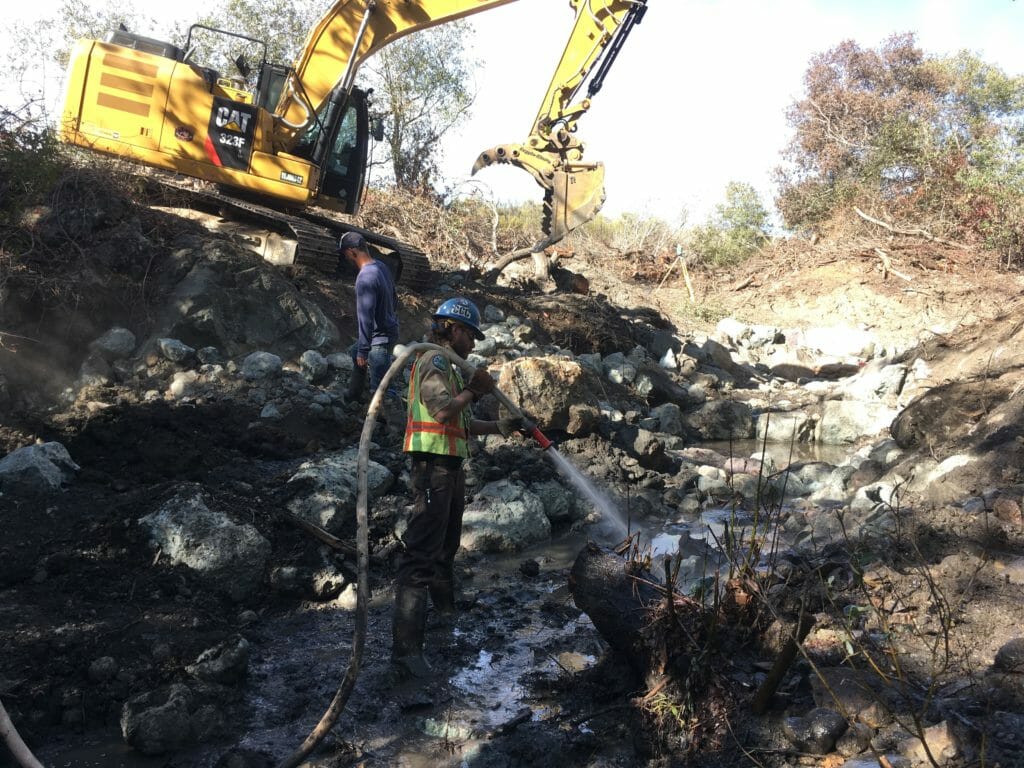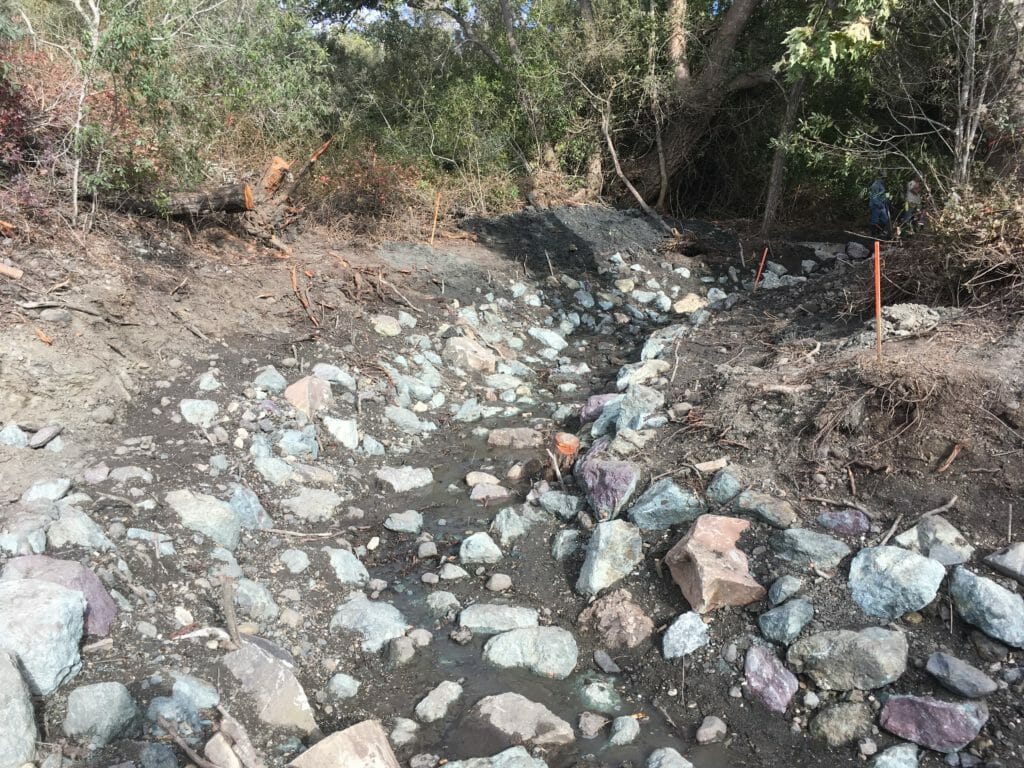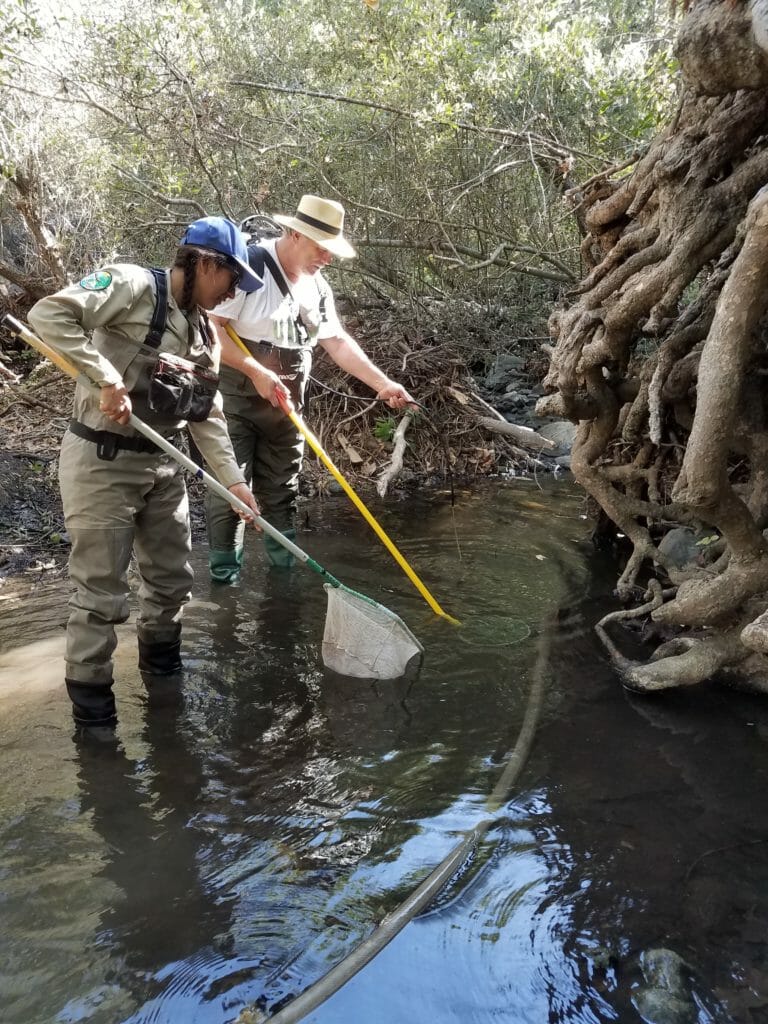Trout Unlimited is working along the south-central coast of California to recover native steelhead runs, largely by restoring habitat and enhancing fish passage and dry season streamflows through cooperative partnership projects with landowners and agricultural operators. Steelhead are listed as Threatened in this region.
On Pennington Creek near San Luis Obispo, TU completed a major restoration project in the fall of 2018. Pennington Creek is a tributary to Chorro Creek, which flows to Morro Bay and provides important habitat for multiple life stages of steelhead.

The Pennington Creek project required three years to complete. It involved removing a high-priority fish passage barrier on Pennington Creek at a diversion structure operated by the San Luis Obispo County Office of Education’s Rancho El Chorro Outdoor School, and installing a new screened diversion to protect fish and streamflow. TU served as lead partner on this project.
This project is distinguished by its involvement with youth education and natural resource programs, in particular the San Luis Obispo County Office of Education’s Rancho El Chorro Outdoor School, the California Conservation Corps’ Riparian and Watershed Restoration Program, and the Morro Bay National Estuary Program.
The Pennington Creek project was a priority for federal and state resource agencies because the old diversion structure and fish ladder functioned poorly at times of low or high flows, and steelhead were impeded from accessing 2.3 miles of good habitat above the structure (this stream reach stays wet year-round, while Pennington Creek dries back during dry years a short distance below the diversion point).

In the fall of 2018, the old ladder and weir were removed, and the stream channel modified to provide a series of engineered step pools to allow upstream and downstream passage for all life stages of steelhead. The existing diversion was modified to meet modern fish screening criteria, and to be protective of flows and steelhead critical habitat by passively ensuring a minimum bypass flow.
Stabilization of all disturbed areas in the Project reach began upon completion of instream construction activities. Leftover soil and gravels excavated during construction were removed from the staging area and disposed of offsite. The staging area was covered with native mulch, slash, and vegetative debris that had been removed to establish site access.

The Project then withstood the heavy rains of the winter of 2018-19. Juvenile steelhead were observed re-occupying the project reach immediately after completion of the construction phase and again this spring.
The Pennington Creek Project effectively doubles the amount of available spawning and rearing habitat in the creek for native steelhead. The Project site will be monitored from 2019 to 2021 to ensure success criteria are met, including survival of mitigation planting, vegetative cover of disturbed areas, and stability of instream structures.
Project Partners
- Trout Unlimited (project and grant management)
- San Luis Obispo County Office of Education’s Rancho El Chorro Outdoor School
- NOAA Fisheries (funding)
- California Fish Passage Forum (funding)
- National Fish and Wildlife Foundation (funding)
- California Department of Fish and Wildlife, Fisheries Restoration Grant Program (funding)
- California Conservation Corps
- Pat Molnar General Engineering
- Waterways Consulting, Inc.
- Althouse and Meade, Inc.

